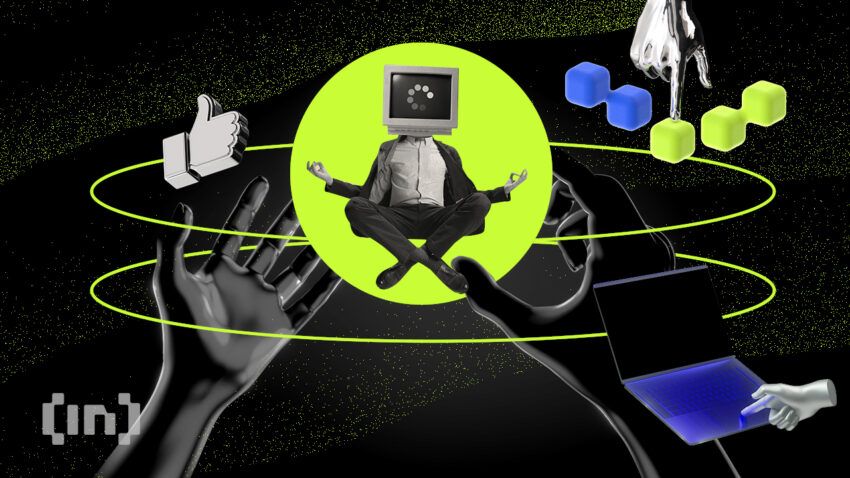
[ad_1]
Amongst the many things that set the crypto space apart is its constant stream of innovation, emerging trends, and evolving narratives, all of which continually push the boundaries of finance and technology.
In a dynamic industry characterized by fast-moving players, trends such as Play-to-Earn (P2E), Metaverse, Real-World Assets (RWA), Move-to-Earn (M2E), and Learn-to-Earn (L2E) have emerged prominently, shaping the landscape of the sector. While each represents distinct innovations and technologies, this article will concentrate on the L2E phenomenon, examining its influence on cryptocurrency literacy and user acquisition strategies of blockchain projects.
L2E tackles a significant hurdle on the road to mainstream crypto adoption: education. It is a model of onboarding people into the blockchain and cryptocurrency industry by rewarding them with NFTs and tokens for simply learning about finance and crypto. The reward is usually in the form of the tokens being learned about.
The incorporation of gamification into the process of learning and comprehending blockchain technology, terminologies, crypto projects, and their products has rendered crypto knowledge accessible and financially lucrative for users, including newbies. Users of L2E programs typically earn between $1 and $5 by completing small learning tasks, such as quizzes following video tutorials or article readings. This mechanism assesses their comprehension of recently absorbed material.

Unlike what you might think, the primary motivation here isn’t just to give out freebies to users. A little disappointing? We understand. The companies creating these L2E platforms aim to retain learners within their ecosystem. The motivation here is two-fold traffic and rewards. Traffic is driven by the influx of learners to the platform, and these learners are rewarded with access to information, learning materials, tokens, or NFTs through the L2E model.
Incentivizing users with L2E platforms’ native tokens, which can be easily exchanged for other tokens or fiat currencies, these platforms strategically compete for market share within the fiercely competitive crypto landscape. By rewarding learners with tokens issued by the platform, they effectively transform users into investors, fostering engagement and investment interest through learning rewards.
This approach transforms users into informed investors, irrespective of their token holdings, representing a savvy and socially responsible customer acquisition strategy. Amidst a crowded field of over 18,000 competing crypto projects, this tactic enables projects to grab attention and educate users about their offerings, fostering an empowered community through learn-to-earn.
The education gap
Despite the ever-growing mainstream investment in cryptocurrencies, a significant knowledge gap persists. According to a survey by Coinme and Coindesk, nine out of ten respondents didn’t know the total number of Bitcoin’s supply and 98% of people failed the basic crypto literacy test. With the many developments and happenings in the crypto space in the last two years, we can’t deny that there is a need to fill the education gap.
The industry is at the cusp of a bull market, partially fueled by the build-up to the recent Bitcoin Halving in April 2024. This is expected to bring a throng of new users looking to make sense of the industry and capitalize on the coming bull run. Generally, a lack of understanding can lead to poor investment decisions, increased vulnerability to scams, and ultimately hinder widespread crypto adoption.

Traditional educational resources like technical documentation and whitepapers can prove dense and intimidating for newcomers. Imagine how you felt when you came across terminologies like “distributed ledger technology” or “proof-of-stake consensus mechanisms” at the start of your crypto journey. Yeah, that immediate feeling of confusion wrapped in a “what is this?!” expression. L2E platforms address this challenge head-on by breaking down and presenting complex topics in a more digestible, interactive, and easy-to-learn format.
Platforms like Mogaland are leading the charge in gamifying financial education by making web3 concepts more accessible and engaging for users. Mogaland offers a gamified metaverse experience where users can learn and earn. By playing, users progressively build their financial knowledge and skills. As they master concepts, they can mint unique NFT companions that serve as trophies of their learning journey, potentially opening the door to the exciting world of web3.
This gamified approach to financial education appears to be gaining traction, with platforms like Mogaland experiencing rapid growth. For example, Mogaland has reportedly surpassed 70,000 downloads within just three months and its community is already 80,000-strong (and counting).
Gamifying crypto education
Learning about financial and technical terms is never the easiest thing to do, which is why L2E platforms are leveraging the power of gamification to transform learning about crypto into an enjoyable and rewarding experience. Users can participate in engaging activities like interactive quizzes to test their knowledge of blockchain fundamentals, bite-sized educational videos on specific crypto projects, or even simulated trading experiences that allow for practice in a safe and controlled environment.

Every completed activity earns the user points, badges, or platform native tokens. They can then use these tokens for various purposes within the platform, like upgrading their NFTs, unlocking new educational content, gaining access to and participating in exclusive events, or simply exchanging them for other cryptocurrencies.
The effectiveness of gamification in knowledge retention is well-documented. By tapping into our natural desire for rewards and competition using points, badges, and leaderboards, we are more motivated to pick up new skills and knowledge. This active process strengthens memory pathways and makes the information we consume more enjoyable to absorb, which leads to better long-term recollections.
Challenges and considerations
While L2E holds immense promise, there are some challenges to consider. There is the potential for users trying to “game the system.” Some users may focus solely on earning rewards without really absorbing the educational content. This is something that needs to be addressed. L2E platforms can implement knowledge checks and verification processes. For example, requiring users to answer comprehension questions after completing educational modules to ensure active learning.
Additionally, the long-term sustainability of L2E models requires careful consideration. It is vital to find the right balance between rewarding participation and maintaining a healthy token economy. Designing tokenomics that incentivizes genuine learning is paramount
Disclaimer
This article is sponsored content and does not represent the views or opinions of BeInCrypto. While we adhere to the Trust Project guidelines for unbiased and transparent reporting, this content is created by a third party and is intended for promotional purposes. Readers are advised to verify information independently and consult with a professional before making decisions based on this sponsored content. Please note that our Terms and Conditions, Privacy Policy, and Disclaimers have been updated.
[ad_2]
Source link





Be the first to comment